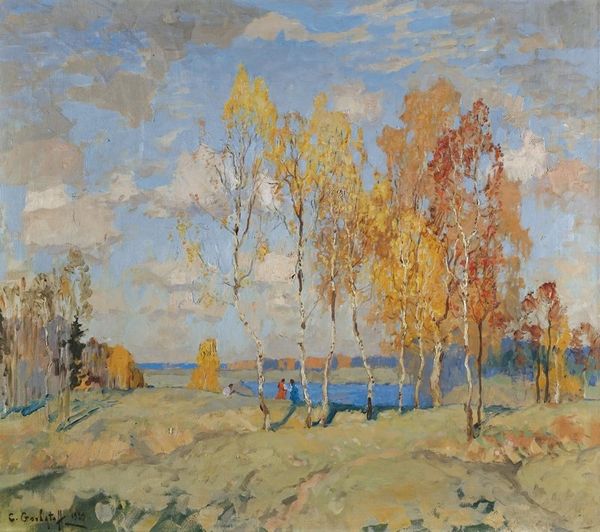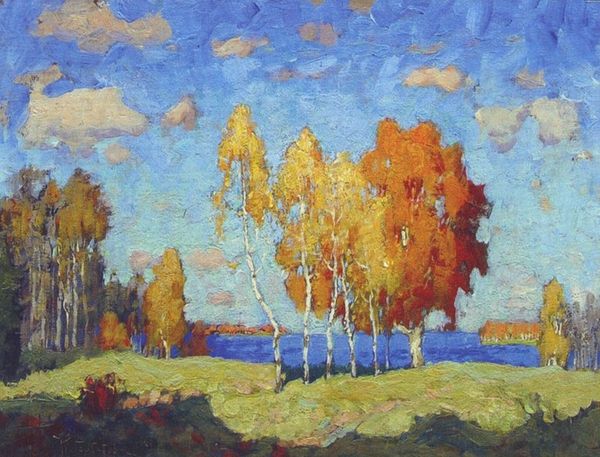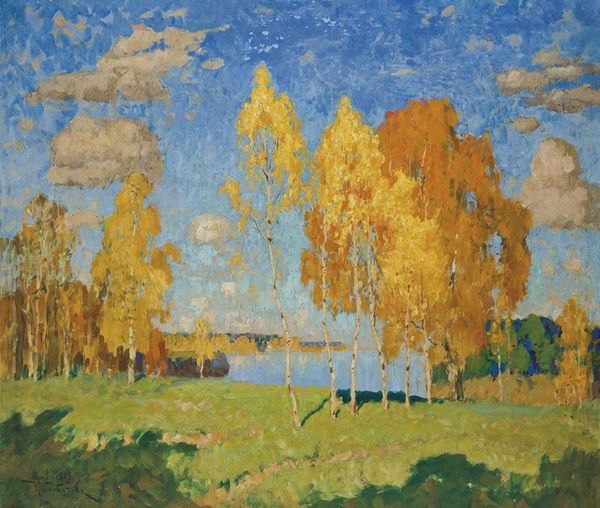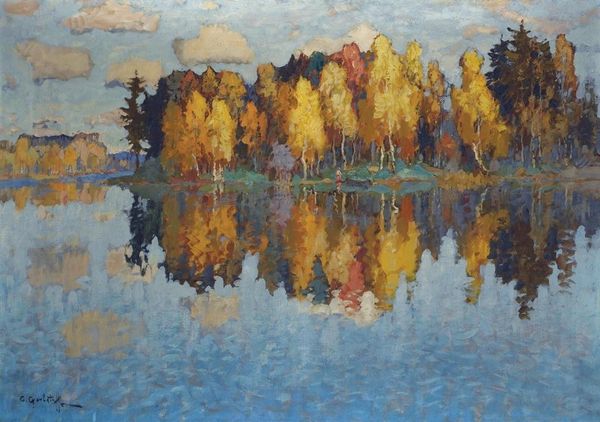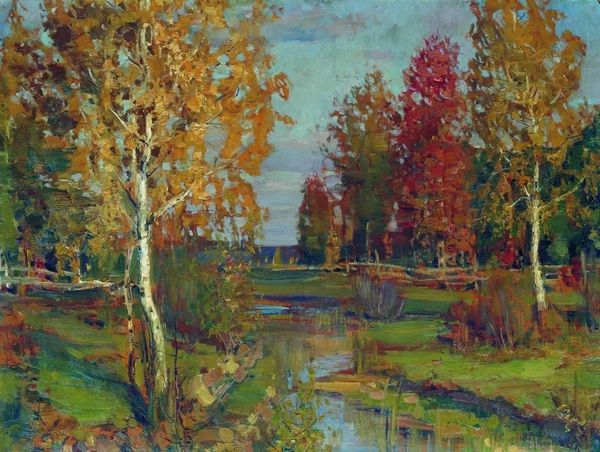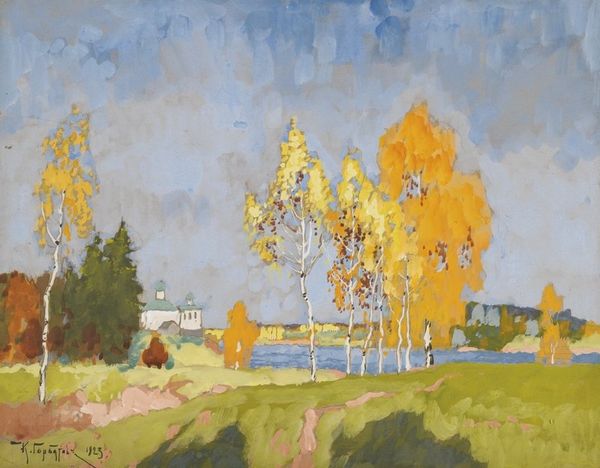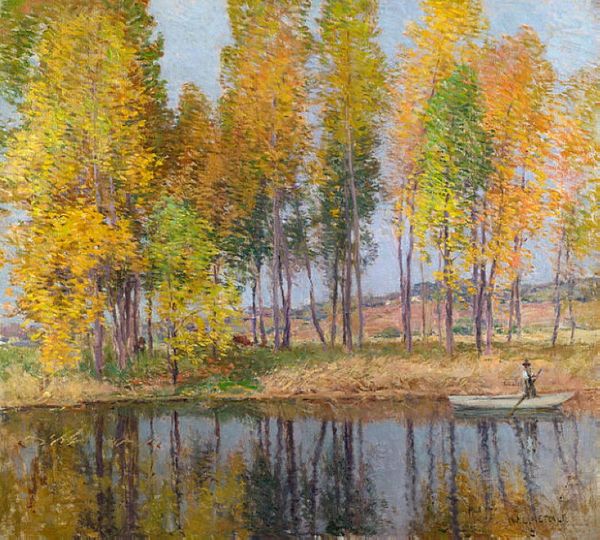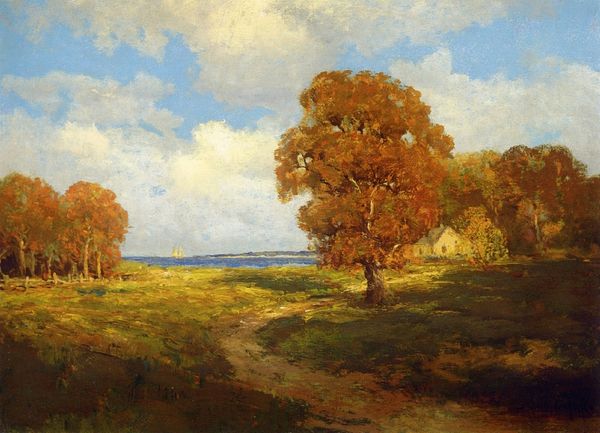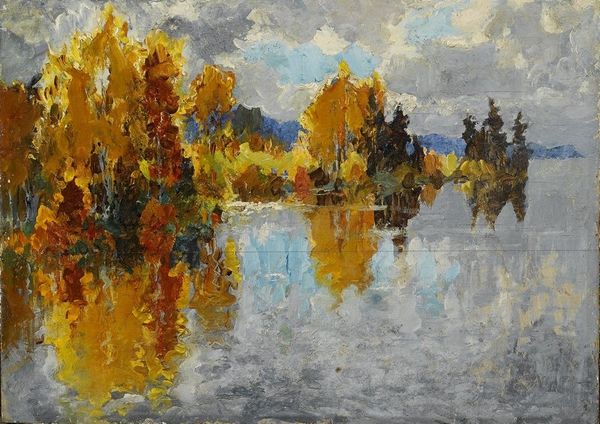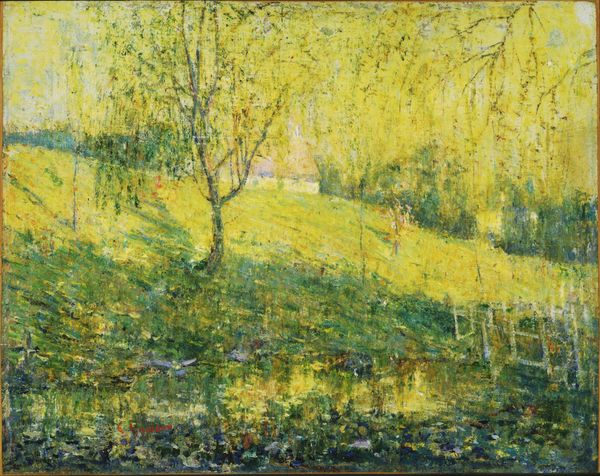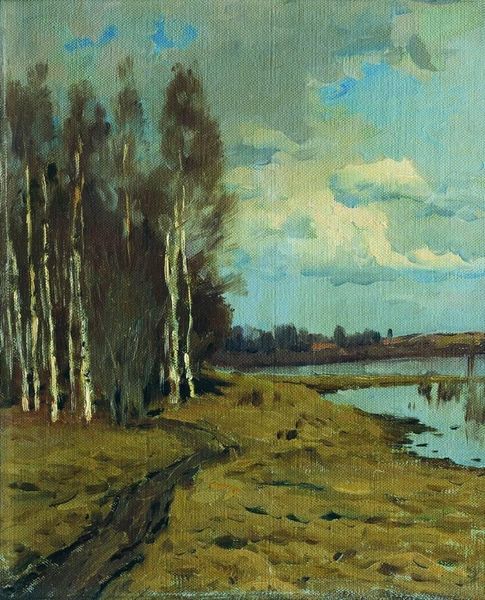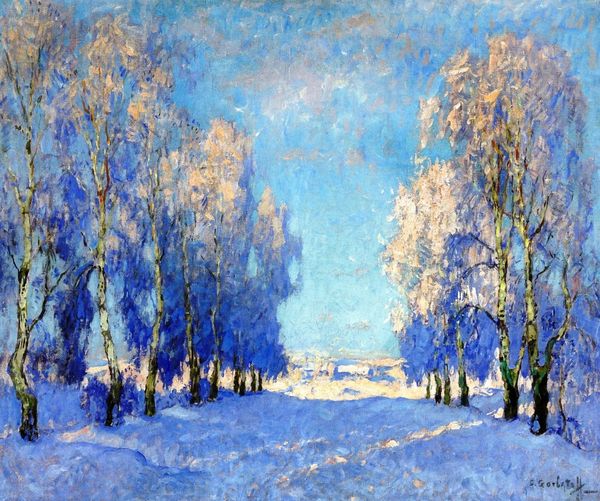
Copyright: Public domain
Curator: Looking at Konstantin Gorbatov's "Autumn Landscape," created in 1929, I'm immediately drawn to the thick application of oil paint and the way he builds up the textures. It's almost tactile. Editor: It does evoke a certain heaviness, doesn't it? It's less airy impressionism, more grounded, earthy. You can almost feel the dampness in the air before winter truly sets in. I wonder about its public reception; 1929 suggests this work entered the cultural landscape just before immense global upheaval. Curator: Exactly! Knowing the artist’s biography gives some interesting context. He emigrated from Russia to Italy, so in examining a piece like this we should consider it as created in exile. Think about the act of recollection that must underpin that palette, that impressionistic rendering. Were those Russian birch trees available to paint there or does this picture come out of memory, perhaps as something being bartered back home? Editor: So it might be viewed in Russia as evidence of successful navigation within a Western art market? Or alternatively a demonstration of his capacity to represent landscape via modern Western means, that actually shores up national pride? What interests me also is its seemingly conservative approach; impressionistic painting felt anachronistic by the late 1920s. Curator: It is fascinating to consider the socio-political currents impacting both the production and potential interpretation of these more traditional approaches. And given the material qualities and the plein-air elements of its manufacture we might understand it as a negotiation between differing aesthetics, both within himself as a painter and in response to varying expectations of a diverse public. It brings out a deeper appreciation for its textures and its potential complexities. Editor: Indeed. "Autumn Landscape" shows how seemingly simple images carry a huge range of complex information relating to memory, location, access to materials and the vagaries of cultural history.
Comments
No comments
Be the first to comment and join the conversation on the ultimate creative platform.
